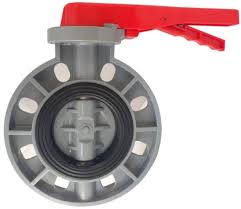Flow control is a crucial aspect of many industrial applications, ranging from water treatment plants to oil refineries. The importance of flow control cannot be overemphasized, and this is where ball valves come in. Ball valves are an essential tool in the flow control mechanism. They allow for the regulation of fluid flow in pipelines, ensuring safety, efficiency, and optimal performance. In this blog post, we will explore the concept of flow control, ball valves, their advantages, and how to choose the right ball valve for your application.
Understanding Flow Control:
Flow control is the deliberate regulation of fluid flow through a pipeline or other conduit systems. Examples include controlling the flow rate of crude oil or the flow of water in a water treatment plant. Flow control ensures that the fluids are delivered consistently and efficiently to their target locations, ensuring the system’s safety and reliability. Various valve types have been utilized for flow control, but none comes closer to ball valves.
What are Ball Valves?
Ball valves are a type of valve that controls the flow of fluid through a pipeline using a perforated or porous ball located within the valve’s structure. Once the valve handle is turned, the ball rotates to either allow the fluid to flow freely or block it entirely. This type of valve has become very popular in many industrial applications due to its reliability, efficiency, and durability. Ball valves come in various sizes, from one inch to over thirty-six inches, ensuring that they can handle a wide range of fluids and pressures.
Advantages of Ball Valves
Ball valves have several advantages over other types of valves, which include:
Less Pressure Drop: Ball valves offer a more streamlined flow path, reducing pressure drops compared to other valve types.
Durability: Butterfly valve are constructed using durable materials such as stainless steel, making them resistant to chemicals and leakages.
Easy Maintenance: Ball valves can be taken apart and reassembled with relative ease, reducing downtime during maintenance.
Choosing the Right Ball Valve for Your Application
Choosing the right valve depends on multiple factors, including fluid characteristics, temperature, pressure, and pipeline diameter. These parameters determine the ball valve’s size, material, and sealing surface. It’s crucial to select a valve that meets your system’s requirements to achieve optimal performance and safety.
In short
Ball valves are integral to flow control in many industrial applications, offering reliability, efficiency, and durability. With the various advantages highlighted, selecting the right ball valve for your system will ensure stable and consistent fluid flow, reducing any downtime due to maintenance or malfunctioning. If you require further assistance in selecting a ball valve or other flow control mechanisms, contact a competent valve manufacturer or supplier who will guide you in selecting a suitable valve.



